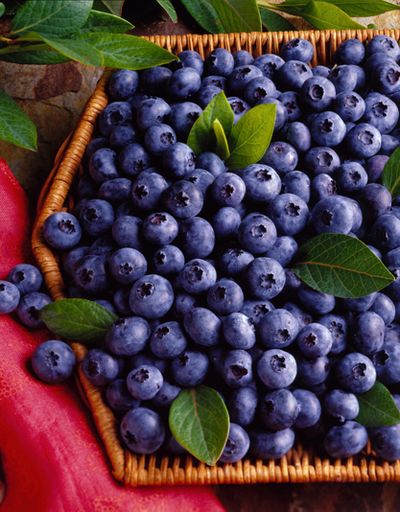Gardening: No green thumb needed for blueberries size of your thumb

I have heard from several gardeners in the last couple of weeks that they are harvesting blueberries the size of your thumb. We can thank all the water we got over the winter and spring and the reasonable temperatures in May and June for that success.
Blueberries are easy to grow if you meet their requirements of well-drained acidic soil, steady moisture and adequate cold temperatures in the winter to set fruit. The cold temperatures are not a problem for us. In the Inland Northwest, soil pH is often the biggest challenge to growing healthy blueberry plants. They generally prefer a pH of 4.5 to 5.5 but will grow in a soil up to 6.5. Our soils tend more toward a pH of 6.5 and higher.
For this reason, blueberries do very well in raised beds filled with a compost-rich soil blend. This mixture will drain quickly but still retain enough moisture to prevent the plants from drying out. Once you fill your boxes, you can take a soil sample to the Spokane Conservation District for a pH test. If the pH is too high, the easiest way to adjust it is to add granular sulfur to the soil in the fall, so the sulfur has time to interact with the soil over the winter. To further help maintain the proper pH, mulch the plants with conifer wood sawdust. Beyond this, the plants will only need a 16-16-16 fertilizer or fish fertilizer applied in the spring as the plants flower.
Blueberries have very shallow, fine root systems that go down only 8 to 10 inches, so they need regular, frequent watering to keep the roots moist. This is especially true during our midsummer heat. Drip irrigation on a timer is the best way to guarantee the plants will get adequate watering. Place two, 1-gallon per hour emitters by each plant and water for two hours, three to four times a week. Mulching the beds as noted above will help keep in soil moisture
While blueberries need cold winter temperatures, some varieties are hardier than others when we get an arctic blast like we did last winter. Recommended varieties for our region include the Blue Crop, Northland and Blue Ray families of berries because they bloom a little later in the season when freezing temperatures are less likely to damage the emerging flowers. Some other varieties are hardy to USDA Zone 4. To further protect your plants don’t plant them in low spots where cold air is likely to pool. Plant two or three different varieties to improve pollination.
It is best to plant them in the early spring so they have a growing season to settle in. If you have a choice, buy plants with as much dirt on the roots as you can and plant them immediately. They need full sun but don’t mind a little shade in the late afternoon. Blueberries have few pest problems. Deer will nibble on young plants but seem to ignore older plants.